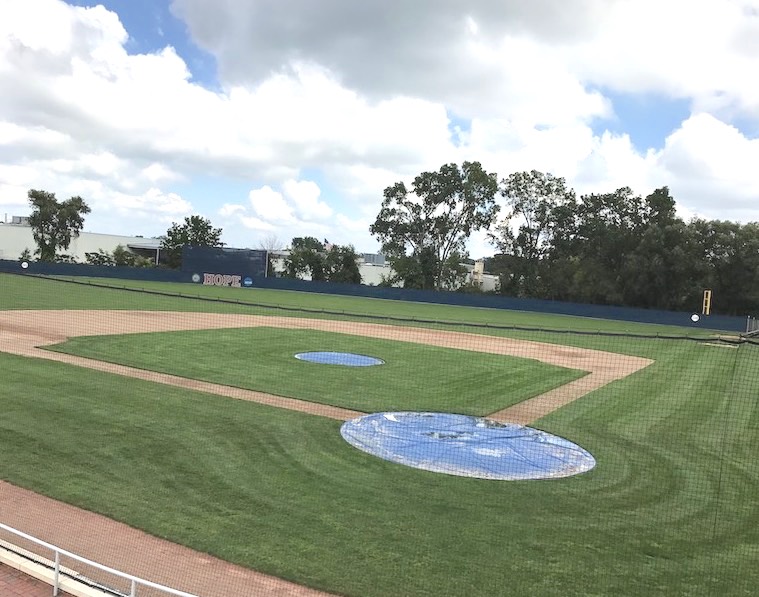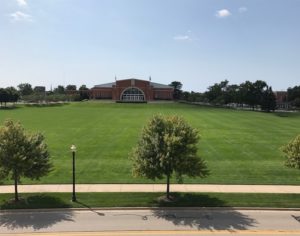By Jim Speelman, CSFM
“Spring sports” is a relative term in my area of the Upper Midwest. Many of our collegiate spring teams start practicing outside in February, and that month would never be labeled spring in Michigan.
Now, this year, due to the global pandemic shutting down our fall sports in 2020, those teams will be practicing and competing in the spring, too. It will make it a spring unlike any other – not only for our spring and fall teams but for sports field managers as well.
More than ever before the sports field manager will be asked to do more things at more locations with less notice, less time, smaller budgets, and with limited staff. The schedules will include multiple practices and games on a single day on limited field space.
So, what are some things sports field managers can do to cope with the intensity of this spring?
1. Remember that we are all in the same boat. Gain some comfort from knowing that we are not the only managers with this large task before us. Also, do not be afraid to reach out to other managers or organizations to talk over the issues you will face.
This spring will give us the opportunity to work together as never before. We will need to be in constant communication with coaches, athletic directors, and athletics department support staff. For some of us, this will be hard because we like to do our own thing. But, this year, going it alone could waste time and money. For those who like to “avoid” people, this will be hard. We must make time each day to talk with those involved with the administration of games or practices.
This year, games and practices can be cancelled at any time. Knowing when events are cancelled will allow us to make better decisions on what resources to use and where. For example, the sooner I know if a lacrosse game is cancelled, the more I can focus on another sport.
2. Extend an extra amount of grace with all the people in our work group. We will need to set aside our independence and look out for the good of the whole. Games will be cancelled, and it will be unfortunate; however, it is nobody’s fault and no one is to blame. We must do our best to be our best every day. Others will react depending on how you handle the situation. Let us be the ones to lead with positivity and understanding.
3. Plowing synthetic and natural turf fields will become a regular operation rather than an occasional one. Make sure your snow removal equipment is prepared for synthetic turf by adding rounded edges to all blades and blowers. Plow down to the recommended one-inch depth and leave the rest to melt. Plow with the seams whenever possible. Make sure you move snow piles far enough off the turf or come back with a blower to move the rest away from the field area. Plowing natural grass may also be required this year. Make sure the field is frozen before you try to remove snow. If your turfgrass is soft underneath, you can damage the surface and create ruts. Test areas outside the main field before trying to plow right down the middle. Use the lightest equipment with the widest tires to get the job done.
There may be times when the best thing to do is NOTHING. Weigh the pros and cons of all of your actions. Let field-clearing decisions become group decisions, so that all are accountable and no one gets singled out.
4. Lay out a tentative schedule based on game and practice times. Figure out what you will need to make the tentative schedule work and pass along extra personnel and equipment/supply needs to your superiors. Start those conversations now to allow time to acquire what you need. Don’t overlook the use of players and coaches to help with their own fields. Since they are familiar with the concept of teamwork, they may be able to help.
5. To gain more time for the unexpected, we may have to delay or change certain cultural practices for a season. Mowing may have to be done less frequently, or at a higher height of cut. The use of plant growth regulators will help to slow the turfgrass down for periods of time. We may decide to delay fertilization until after graduation, or use less, or use very slow release. These products will keep the turfgrass green but not explode with top growth. Consider the use of combination products such as fertilizer crabgrass+grub control in one application. Reduction of other inputs such as aeration and seeding might also be delayed until the business of March, April and May is over.
6. We may need to adjust our workday by prioritizing which fields are important that day. Fields with earliest game start time become priority number one, then next game or first practice use after that. We may have to sacrifice on how the whole complex looks on any given day to make sure the game field looks good that day. We are usually our harshest critics, and we may need to give ourselves a break.
7. Pay attention to our mental health and avoid neglecting our families. We will need to find the correct work/life balance this year. Find someone who can ask you, “How are you doing?” and answer him or her honestly. Ask your supervisor or HR people where you can go or whom you can talk to when you feel overwhelmed. Don’t try to keep it all in.
Jim Speelman, CSFM, has been sports turf manager at Hope College in Holland, Mich., for more than 20 years, managing more than 40 acres irrigated turf and two synthetic turf fields with one full-time, one part-time and three to four summer employees. Speelman is also past president of the Michigan Sports Turf Managers Association.


